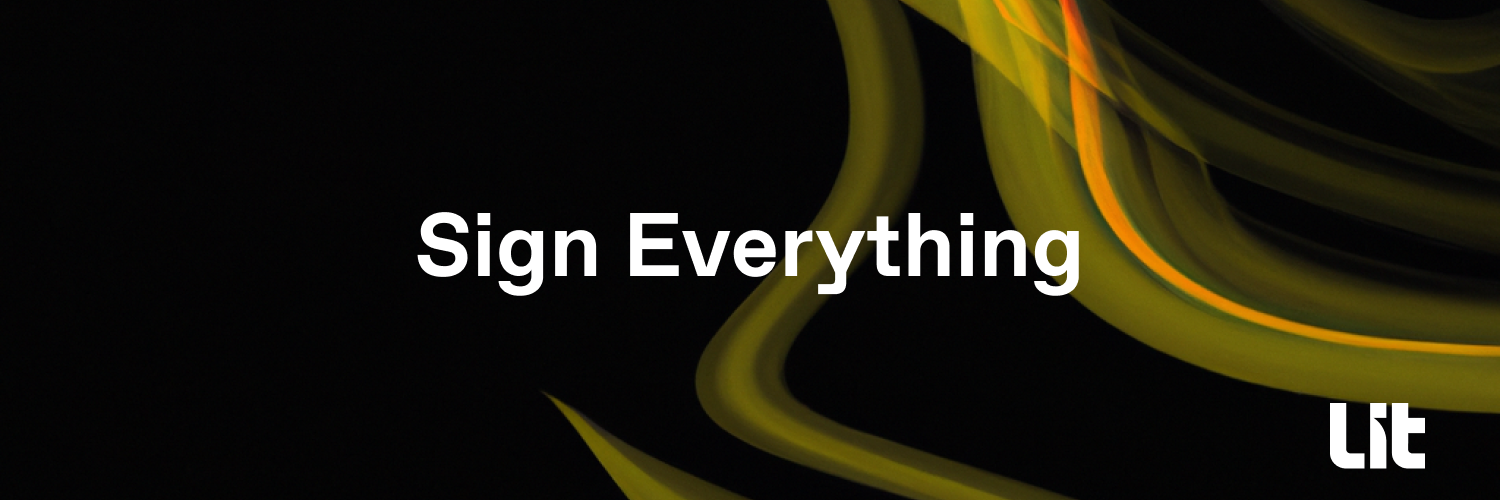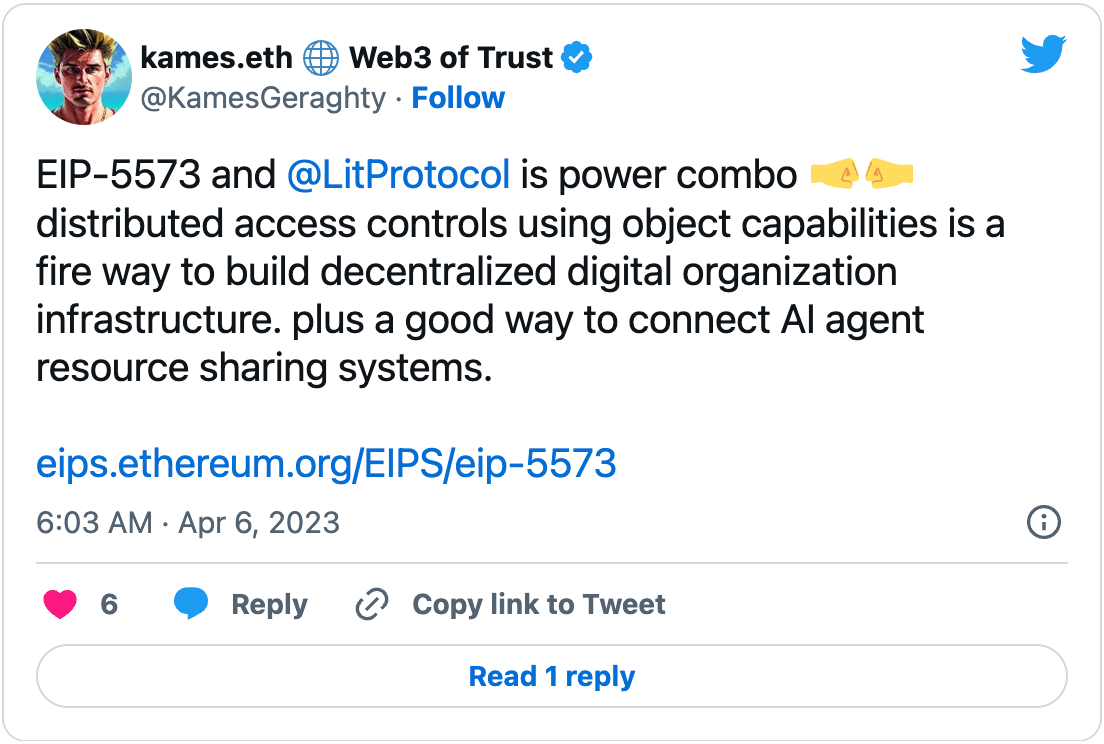Authenticity in the AI Era

How Lit Protocol Can Preserve Truth in the AI Era and Opportunities for Startup Founders Focused on Authenticity
As AI continues to reshape our digital landscape, the impact on trust and authenticity is becoming increasingly significant. In an era plagued by misinformation and deepfakes where the lines between what is real and what is fabricated continue to blur, robust and resilient cryptographic solutions for signing data with keys are crucial. This post delves into the aspects of threshold signing, a core feature of Lit Protocol, which can be used to preserve trust and authenticity in digital information in an increasingly AI-driven world (as well as other use-cases).
Fred Wilson, in his "Sign Everything" post, states the right mantra for this era and explains:
“I think AI and Web3 are two sides of the same coin. As machines increasingly do the work that humans used to do, we will need tools to manage our identity and our humanity. Web3 is producing those tools and some of us are already using them to write, tweet/cast, make and collect art, and do a host of other things that machines can also do. Web3 will be the human place to do these things when machines start corrupting the traditional places we do/did these things.”
Taking this idea further, we’re suggesting that a registry of identities associated keys (which do the signing) in order to know who made a given claim is neither ideal for privacy nor in line with the way that people use the web.
Enter threshold signing, a cryptographic technique, that offers a unique solution to ensure digital information integrity. In a threshold signing scheme, like the one employed by Lit Protocol, the responsibility for signing and validating digital content is distributed among a network. The system requires participation from a predefined number, or threshold, of parties in order to sign some data. This data can be some content that one wants to ensure is authentic, for example verifying someone published some specific content or event that a particular input is prime (more here). This distribution of trust eliminates single points of failure and prevents any single party from compromising the integrity of the signing key. In other words, Lit can act as a ‘signer of last resort’, meaning that threshold signatures can be trusted since the verification is from a multitude of parties aka a network.
Here are some key areas where threshold signing can make a difference:
Content Authenticity: By implementing threshold signing for digital content such as images, videos, or documents, users can identify and counter deepfakes and data that has been manipulated. For example, startups could develop systems that integrate threshold signing to verify watermarked or signed content as well as display detect these signatures and display proof of claims.
Data Integrity: Threshold signing can secure data transmission between parties, ensuring information reliability within AI systems and reducing misinformation risks. Startups could create secure databases that utilize threshold signing to verify records, providing an extra layer of protection against data tampering.
Signed Communications: By combining threshold signing with encrypted communications, startups can protect against eavesdropping and tampering, ensuring sensitive AI-related data remains secure and accessible only to authorized parties. This approach could be applied to messaging apps, video conferencing platforms, or other secure communication tools.
Provenance and Attribution: Startups can use threshold signing to enable secure and verifiable attribution of digital content to its original creators or sources. By implementing blockchain or distributed state machine technology alongside threshold signing, startups can ensure traceable and verifiable content origins.
Accountability and Auditing: Cryptographic signatures enabled by threshold signing can provide a secure means of logging actions and decisions made by AI systems. This approach makes it easier to audit and trace AI behavior and identify potential sources of misinformation. Startups could create platforms that enable AI developers to incorporate threshold signing into their systems, facilitating transparent and auditable AI behavior.
For startup founders exploring the idea maze and looking to build authenticity technologies, here are some routes to consider:
B2C verification tools: Startups can develop applications utilizing user and threshold signing to authenticate and verify digital content, right where users are interacting. ERC-5573 is a good place to start investigating to tie this to web3 and the Sign In With Ethereum standard.

B2B integration tools: Startups can create APIs, SDKs, or other integration tools that enable businesses, developers, and professional end-users to incorporate threshold signing into their existing systems, platforms, or applications. For instance, startups can develop plugins or modules that facilitate seamless integration with popular content management systems (CMS) or other web platforms.
Signed collaboration: Startups can build platforms that facilitate secure, cryptographically signed collaboration among multiple parties. By incorporating threshold signing and other cryptographic techniques, these platforms can ensure the integrity of shared information and foster trust among users.
Innovating for privacy and security: Startups can design solutions that address privacy concerns while maintaining authenticity. By integrating privacy-preserving technologies like zero-knowledge proofs or client side encryption, startups can ensure that users can trust and verify digital content without compromising their privacy.
In the age of AI, maintaining authenticity and trust in the digital world is vital. By leveraging threshold signing systems like Lit and applying product thinking to usability challenges, startups can seize the opportunity to build innovative, web3 enabled products that contribute to a more secure and trustworthy digital environment. These solutions can play a pivotal role in shaping a future where the integrity of information remains unassailable in the face of rapidly evolving AI-driven challenges.
If you're building a solution in this domain, we encourage you to reach out, as we'd love to help support and accelerate your efforts!

